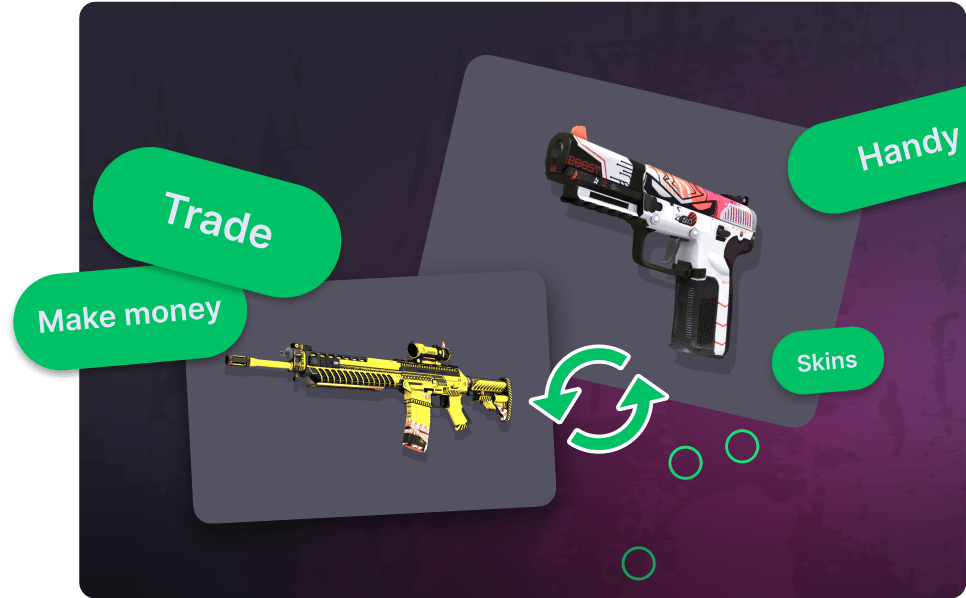Empowering Relationships: BVSM Marriage Services
Explore expert advice and support for successful marriages.
Skin Deep: The Intriguing World of CS2 Skin Trading
Dive into the mesmerizing world of CS2 skin trading! Unlock secrets, tips, and strategies to dominate the market and boost your collection now!
Understanding CS2 Skin Trading: A Beginner's Guide
Understanding CS2 skin trading can be overwhelming for newcomers, but it's a thrilling aspect of the game that can enhance your gaming experience. In this guide, we will break down the essential elements of skin trading, from the basics of what skins are to the various platforms where trades can occur. Skins are unique cosmetic items that change the appearance of weapons in Counter-Strike 2 (CS2), and they hold significant value in the gaming community. Players trade these skins for a variety of reasons, including personal preference, investment, or simply to collect rare items.
To start trading, it's important to familiarize yourself with the CS2 skin market. Here are some key points to consider:
- Research Prices: Use websites like Steam Market or third-party marketplaces to stay updated on skin values.
- Understand Rarity: Skins are ranked from Common to Covert; generally, the rarer the skin, the more valuable it is.
- Beware of Scams: Always trade with reputable users and be cautious of deals that seem too good to be true.

Counter-Strike is a popular tactical first-person shooter that pits teams of terrorists against counter-terrorists in various objective-based game modes. Players can enhance their arsenals with a variety of weapons and gear, including melee options like the kukri knife, which adds unique strategies to close-quarters combat. The game's competitive scene is vibrant, featuring tournaments and a dedicated community that continues to evolve.
The Economics of Skin Trading: How Value is Determined
The economics of skin trading has emerged as a fascinating realm within the gaming community, where the value of virtual items, often referred to as skins, is determined by various factors. Unlike traditional goods, the value of skins is influenced by rarity, aesthetics, and the overall demand within the marketplace. For instance, a limited-edition skin that is difficult to acquire typically has a higher value compared to more common skins, leading collectors and traders to invest significantly in these items. The fluctuation in prices also mirrors trends in the gaming industry and player preferences, making it essential for traders to stay informed about the latest developments in the market.
The mechanics behind skin trading can be compared to conventional economic principles, where supply and demand play a crucial role. As players seek to enhance their gaming experience and express their individuality through unique skins, the competition for desirable items drives up their prices. Additionally, platforms dedicated to skin trade often implement their own systems of valuation, influencing how much skins can fetch in transactions. This evolving landscape prompts traders and players alike to continuously assess the worth of their assets, revealing a complex interplay of psychological factors, market trends, and community engagement that ultimately shapes the economics of skin trading.
Top Tips for Safe and Successful CS2 Skin Transactions
When engaging in CS2 skin transactions, safety should always be your top priority. To prevent scams, start by using reputable platforms that are well-known in the gaming community. Always verify the authenticity of the skins you wish to buy or sell. Look for platforms that offer user reviews or ratings, which can provide insight into the reliability of other traders. Additionally, consider using escrow services that hold the skins during the trading process, ensuring both parties fulfill their end of the agreement before the deal is completed.
In addition to securing your transaction, understanding the market trends is essential for a successful trade. Keep an eye on the fluctuating values of various CS2 skins by utilizing dedicated price tracking websites and forums. This will help you know when to buy or sell for maximum profit. Moreover, engage with the community through social media channels and online forums to gain insights and tips from experienced traders. Remember, staying informed not only increases your chances of a successful transaction but also enhances your overall trading experience.